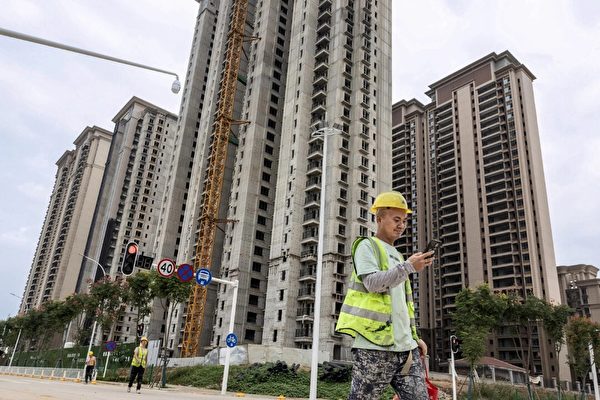In recent years, China’s economy has continued to decline, with a deepening real estate crisis. Housing prices in several provinces have dropped below a thousand yuan. Experts believe that the real estate market has become a black hole for the Chinese economy, with prices showing no signs of reaching the bottom.
The phenomenon of houses in Hegang, Heilongjiang being sold at giveaway prices is spreading to small and medium-sized cities across the country.
Recently, Shell Looking for Houses Network has listed a large number of low-priced properties. In Zhangjiakou City, Hebei Province, a 60 square meter two-bedroom apartment in a factory residential building is listed at 70,000 yuan, equivalent to a unit price of 1,167 yuan per square meter.
In Xiahua District, there are numerous listed properties priced around 100,000 yuan, involving various residential buildings such as factory residences, power plant residences, power supply bureau community, and carriage society residential buildings, with prices ranging from 800 yuan to 1,200 yuan per square meter.
A real estate agent told Economic Observer Network that in 2019, the average transaction price of commercial housing in Xiahua District was 12,000 yuan per square meter, with some high-end properties approaching 20,000 yuan per square meter.
The turning point came in the second half of 2021 when properties that were originally priced above 10,000 yuan per square meter plummeted to around 7-8,000 yuan. The second round of price cuts occurred in the second half of 2023, with a nearly 50% drop. Transactions below a thousand yuan per square meter first appeared in April this year.
In Xuanhua District of Zhangjiakou City, a 60 square meter two-bedroom apartment in a chemical plant family building was sold for only 40,000 yuan, equivalent to a unit price of 667 yuan per square meter; while a two-bedroom apartment of the same size in the Yaxie community was transacted at 80,000 yuan.
In Jilin City, Jilin Province, by February 2020, two-bedroom residential buildings were already transacting below a thousand yuan. In March 2024, a 45 square meter one-bedroom apartment in Taobei community was transacted for 20,000 yuan, at a unit price of 500 yuan per square meter.
In Zhuzhou, Hunan Province, in September 2021, a 100.8 square meter two-bedroom apartment in the Rose Garden community was transacted at 67,000 yuan, pulling prices down from 2,000 yuan to 665 yuan per square meter.
In more than 10 communities including Yuanjiawan community, Cuizhu community, Zhongxing village community, and Foreign Trade Packaging Factory community, transactions are generally in the low hundreds to a thousand yuan per square meter range.
In Datong City, Shanxi Province, a 48 square meter two-bedroom apartment in the Pingcheng District Bureau residential community is listed at 55,000 yuan; while a 62 square meter two-bedroom apartment in the Yunwang District New District residential community is listed at 37,000 yuan.
According to Shell’s transaction records, in September 2022, second-hand housing in Datong saw transactions below 3,000 yuan per square meter, and by April 2024, transactions below 1,000 yuan per square meter were recorded.
Cities in provinces such as Sichuan, Guizhou, Guangxi, Gansu, Inner Mongolia, Heilongjiang, and Liaoning have all experienced similar situations. Even in cities like Jieyang, Heyuan, and Qingyuan in Guangdong, housing prices have dropped to around 1,000 yuan per square meter.
On May 17th, the CCP introduced several measures to revitalize the real estate market, including canceling the lower limit of mortgage interest rates and reducing the minimum down payment ratio.
However, in the midst of China’s economic downturn and the real estate bubble crisis, with giants like Evergrande, Country Garden, and Vanke facing consecutive defaults, the effectiveness of the aforementioned revitalization measures is questionable.
According to the report released in early June by the Zhuge Looking for Houses Data Research Center, the average price of second-hand residential properties in the monitoring of 100 key cities has been declining for 15 consecutive months on a month-on-month basis and 17 consecutive months on a year-on-year basis.
In May, the average prices of second-hand houses in cities of all levels continued to show a “full decline” trend, with the resilience feature of first-tier prices continuing to be prominent in second, third, and fourth-tier cities, with first-tier cities experiencing a “six consecutive declines” on a month-on-month basis.
Columnist Wang He of Dajiyuan once analyzed, stating, “The bursting of the Chinese real estate bubble has led to a significant decline in the entire real estate market. In this process, no rescue measures can be effective.”
Wang pointed out that Beijing has always had a blurred understanding of the nature of the bursting real estate bubble, leading to sluggish and ineffective actions, which are quite inadequate.
Taiwanese financial expert Huang Shicong also analyzed for New Tang Dynasty Television, saying, “The CCP’s measures to boost the market may seem powerful, but they are merely temporary life-support injections,” emphasizing that housing prices in China are far from bottoming out.
Commentator Cai Shenkun, who resides in the United States, expressed in the Elite Forum, “Since a few years ago when the top real estate enterprises started to default, the CCP did not take it seriously. It always felt that the real estate market would maintain a stable or upward trend.
“But with the defaults of these top enterprises, the blow to the confidence in the entire real estate market is huge because in the past, these top enterprises not only had large amounts of loans in banks but also borrowed a lot of foreign debt. Once these foreign debts default and cannot be repaid, it will affect all real estate enterprises, causing a substantial decline in their assets.”

